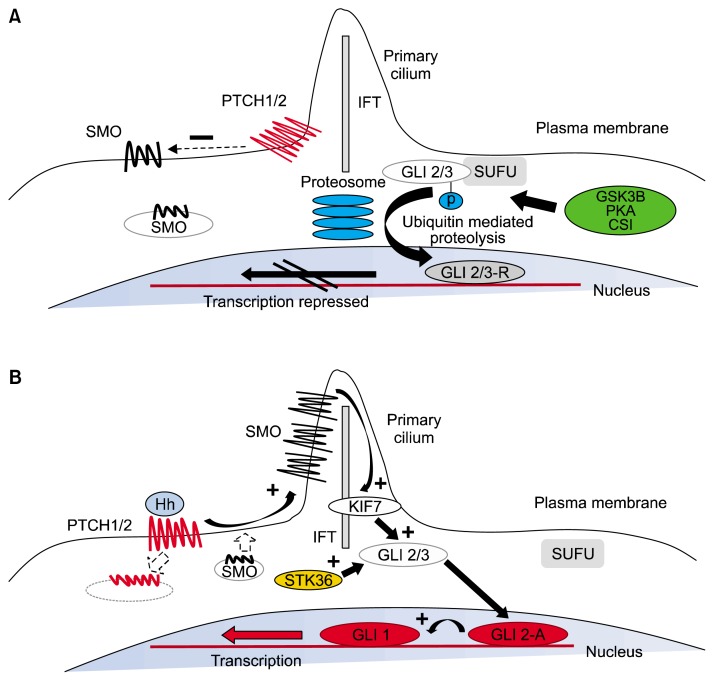Figure 3.
The mechanism of Hedgehog (Hh) signal transduction. (A) In the resting state, Pached (PTCH)1/2 is expressed on the plasma membrane and acts to repress Smoothened (SMO) activity by preventing its expression and localization to the primary cilium. GLI2/3 transcription factors are within a complex, including SUFU, an inhibitor of Hh signaling. This complex promotes nonspecific phosphorylation of the C-terminus by GSK3β, CSI, and PKA, resulting in E3 ubiquitin ligase activity and subsequent partial proteosomal proteolysis to the C-terminal truncated repressor form. After translocation to the nucleus, the repressive form of GLI2 (GLI2-R) and GLI-3R potently inhibit the Hh transcriptional program. (B) Interaction of Hh ligand with PTCH promotes PTCH internalization and degradation and blocks the repression of SMO, causing its accumulation within the primary cilium. Active SMO in the primary cilium stabilizes the full-length forms of GLI2 (GLI2-A) and GLI3 (GLI3-A) and accentuates the effect of other positive regulators of Hh signaling, including serine threonine kinase 36 (STK36) and kinesin family member 7 (KIF7), which may be involved in translocation of GLI into the primary cilium. After translocation to the nucleus, GLI2-A potently activates transcription of downstream Hh targets, including GLI1 and PTCH1, and influences chromatin conformation, apoptosis, cell cycle activity, and differentiation (https://www.ncbi.nlm.nih.gov/pmc/articles/PMC3705708/figure/F1/).

